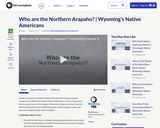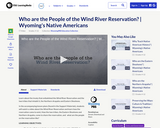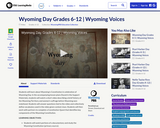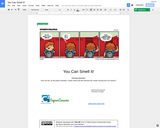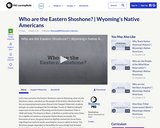
Learn how and when the Eastern Shoshone came to Wyoming, what are the Shoshone values, and what are the people of the Eastern Shoshone like? In the accompanying lessons plans (found in the Support Materials), students will gain an understanding of the Fort Bridger Treaty of 1868 including its importance to the state of Wyoming and the Eastern Shoshone Tribe in 1868 and today. The American Bison, or Buffalo as preferred by most tribes, has a significant existence among the Native American people. For thousands of years, the great American Buffalo roamed the Great Plains, migrating from north to south, searching for areas on which to thrive. The Shoshone people depended on the buffalo for many things that included food, clothing, and shelter. Every part of the buffalo was used and provided for the people.
LEARNING OBJECTIVES:
Students will study (Highlight, paraphrase and report) the Treaty of 1868 between the Eastern Shoshone Tribe and the United States Government.
Students will learn about the Eastern Shoshone people through the use of research and technology.
Students will understand that the history of the Shoshone people in the Wind River Mountains dates back thousands of years.
Students will understand that the circle of life continues in a perpetual cycle and is passed on through oral tradition. These stories often taught a lesson to young people.
Students will understand the indigenous perspective of interconnectedness. Students will understand how bison populations were devastated by western expansion.
Students will learn how to construct, read, compare and analyze different population graphs.
Students will understand how the diets of the Shoshone people varied depending on the areas in which they lived.
Students will acquire knowledge of the Wind River Reservation communities and be able to identify these locations on a map.
Students will be able to further describe how their culture has shaped them.
Students will be able to define the concept of culture.
Students will be able to explain some of the attributes of culture.
- Subject:
- English Language Arts
- Geometry
- History
- Mathematics
- U.S. History
- Material Type:
- Activity/Lab
- Lesson
- Provider:
- Wyoming PBS
- Date Added:
- 09/17/2019
